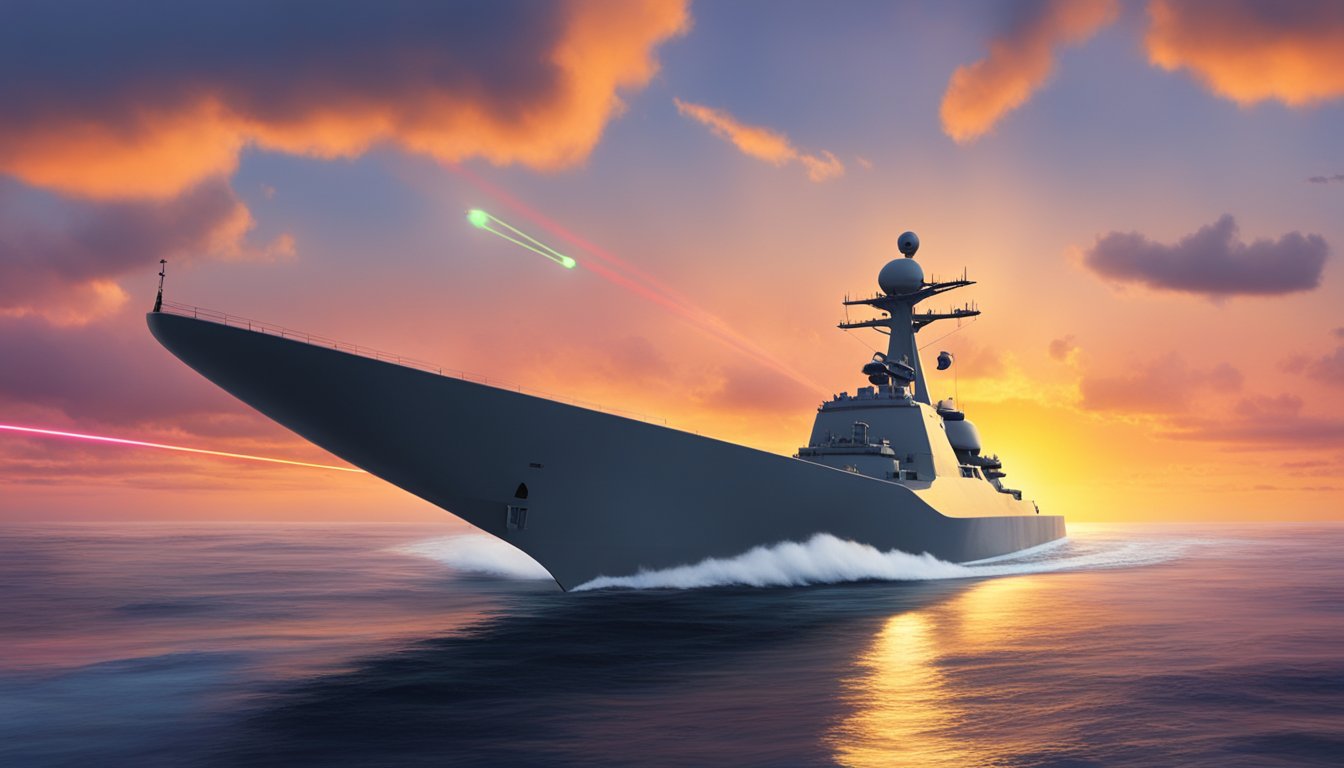In an impressive achievement, the U.S. Navy successfully tested its High-Energy Laser with Integrated Optical Dazzler and Surveillance (HELIOS) system aboard a warship during the 2024 fiscal year.
This development was detailed in a report from the Office of the Director, Operational Test and Evaluation, issued in January.
Testing Details
As part of a weapons testing exercise, the Arleigh Burke-class destroyer Preble utilized the HELIOS system to engage an unmanned aerial vehicle.
Although the report doesn’t specify when or where the test took place, it did include a striking black-and-white image of a laser beam shooting up from the ship.
The testing efforts were coordinated by the Center for Countermeasures, a program active since 1972 that evaluates the Department of Defense’s response to advancing technological threats.
Remarkably, the center conducted 32 evaluations focused on the development and testing of directed energy weapons in the 2024 fiscal year alone.
Operational Significance
The recent test aboard the Preble aimed to verify the functionality and performance of the HELIOS system, according to the report.
While the exact location of this test remains undisclosed, it’s known that the Preble set sail from Naval Base San Diego in September 2024 and arrived in Yokosuka, Japan, on October 12, 2024.
Lockheed Martin initially delivered this powerful tactical laser system, boasting over 60 kilowatts, to the Navy in August 2022, marking a historic moment as the first tactical laser fit for existing naval vessels.
The need for such technology has become increasingly urgent due to the rising prevalence of unmanned warfare, particularly in hotspots like the Red Sea and Gulf of Aden.
Since late 2023, U.S. Navy vessels have confronted drones and missiles launched by Iran-backed Houthi rebels, highlighting the operational demand for advanced directed energy solutions.
Challenges Ahead
Vice Adm.
Brendan McLane noted the absence of a field-deployable laser, recognizing that a directed energy weapon would significantly bolster U.S. warships’ capabilities to counter Houthi threats.
Moreover, integrating laser systems into Navy ships would help crews manage their stock of traditional munitions more efficiently.
Despite ongoing investments totaling around $1 billion annually by the Defense Department for high-energy lasers and high-power microwaves, the results have not yet met expectations, frustrating Navy leaders.
The Navy has faced considerable hurdles in the development and deployment of directed-energy weapons.
Challenges include ensuring effective laser operations in field scenarios, meeting operational needs, and overcoming technological hurdles.
Additionally, concerns about providing sufficient power on ships and the impact of environmental factors, such as fog and wind on laser performance, persist.
At present, the Navy operates eight Optical Dazzling Interdictor (ODIN) laser dazzlers on its Arleigh Burke-class destroyers, designed to confuse and disrupt enemy sensors.
Meanwhile, a 150-kilowatt Laser Weapon System Demonstrator (LWSD) has also been successfully installed on a San Antonio-class amphibious transport ship.
Source: Militarytimes

